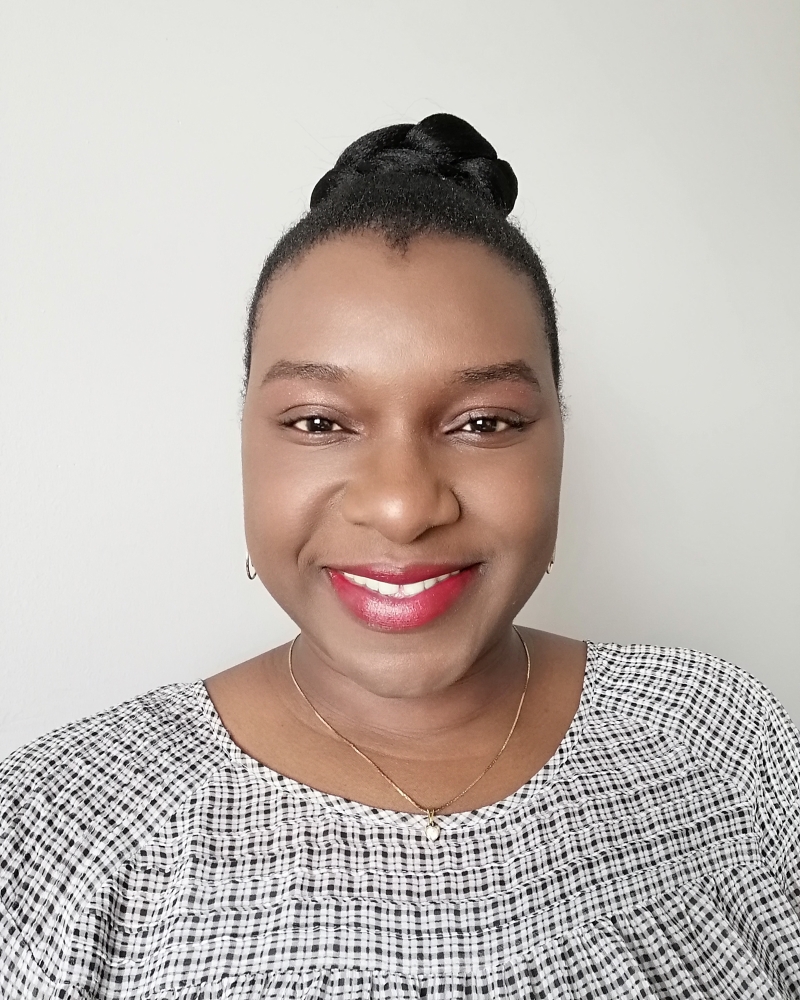There are many ways to shape a young person’s mind. Cressana Williams-Massey does it by packaging STEM kits.
Of course, that’s not all the Jamaican born, chemistry and biochemistry graduate does. Williams-Massey joined the Faculty of Engineering and Applied Science last year as the first Program Team Lead for the faculty’s outreach initiative designed to engage and inspire Black youth in Kingston toward careers in the sciences, called Black Youth in STEM. The reason why she sends out STEM kits to young students all around the city goes back to her childhood in Westmoreland, Jamaica.
“From the time I was in primary school,” Williams-Massey recalls, “I wanted to do something in the sciences.” She cycled through career options the way young children do, with curiosity, ambition, and speed. “I wanted to be a veterinarian. Then I wanted to be a doctor. Then a pathologist at one point,” she says, laughing. “By the time I reached high school, I wanted to be a biochemist. But then I thought, should I study physics?”
There was always a love for science. It wasn’t unique to Williams-Massey. There are many girls in Jamaica who nurture and realize such ambitions. “If you check the websites of the three main universities in Jamaica,” she explains, “there are far more females enrolled in school than males, and this pattern is usually seen in the field of science.”
So when she reached the limestone city in December last year, Williams-Massey experienced a culture shock. One of the key objectives of the STEM youth outreach program, not just for Queen’s but across Canada, is to increase female participation. And Black Canadians in particular, Williams-Massey observed, generally lean toward Arts and Business.
Her position as the Program Lead for Black Youth in STEM was created to address that issue. As someone who was born and raised in a country where Black women shine in STEM roles, Williams-Massey believes she is still learning how to foster the same love for science among youngsters in Kingston. Interestingly enough, it’s her career path in Jamaica that has equipped her with the skillset to do so.
“Back in Westmoreland, there aren’t many jobs in the chemistry and biochemistry field,” Williams-Massey says. So after graduating with a Bachelor of Science degree in 2008, she took up teaching at a high school. It was the beginning of a 12-year career in the field. “I’ve taught students who pursue science courses because their parents want them to become doctors.” She found that some of those students often ended up dropping out partway through the program, “because they were forced to be somebody they didn’t want to be.” Working at multiple high schools and colleges allowed her to understand the best ways to engage a student and, perhaps more importantly, how not to.
It is why Williams-Massey is currently scouring the internet for stories of successful Black Canadians in STEM. “I want to show my students role models they can be inspired by.” She believes representation is a powerful tool in attracting youngsters to STEM, “but it’s hard to find information on Black Canadian professionals in STEM,” she admits.
That might change someday, thanks to the STEM kits that are given to Black youth enrolled in the virtual, out-of-school program.
“We have two groups of students in the Black Youth in STEM program,” Williams-Massey explains. The first currently consists of 24 students between Grades 1 and 4, split into two workshops. The second has 17 students between Grade 5 and 8 in a single workshop. There are two instructors per workshop, all of whom are Black undergraduate or graduate students at Queen’s.
The selection of university students to take on the role of instructors was a conscious one. Youngsters are more likely to relate to them than to older teaching faculty. “We look for instructors who have mentorship experience, because it’s not just about catering to the cognitive domain,” she says. “These children are at a very impressionable age, and if they feel good about exploring science, chances are they might end up loving it.”
There’s a marked difference in demeanor when it comes to the two groups of students. “In my first week, I was expecting the younger kids to be a little shy, but they’re the most talkative set!” she says. Williams-Massey noted that when carrying out their STEM tasks, they generally engage their instructors by asking questions and expressing their opinions in a manner that shows very active learning. “We call them Junior Engineers, the mere fact that you have the word ‘engineer’ in the name shows that it’s hands on and they’re building stuff.”
When parents register their children for the ACTUA sponsored workshops, Williams-Massey and her team send them STEM kits. A STEM kit can comprise of filter paper, washable markers and a disposable cup packaged in a Ziplock bag to carry out a paper chromatography experiment or even spaghetti sticks and glue to make spaghetti bridges like civil engineers. These simple items, when combined with a lesson plan conducted by skilled instructors over Zoom, allows Black youth in Kingston to work like scientists and engineers to explore potential career pathways.
Williams-Massey has plans to expand the program over the course of the year, with additional workshops in the summer designed for older children in Grades 7 to 10. Though the details haven’t been finalized, the long-term goal is clear: to increase the number of Black engineering students at Queen’s, and the number of Black scientists and engineers in Canada.
